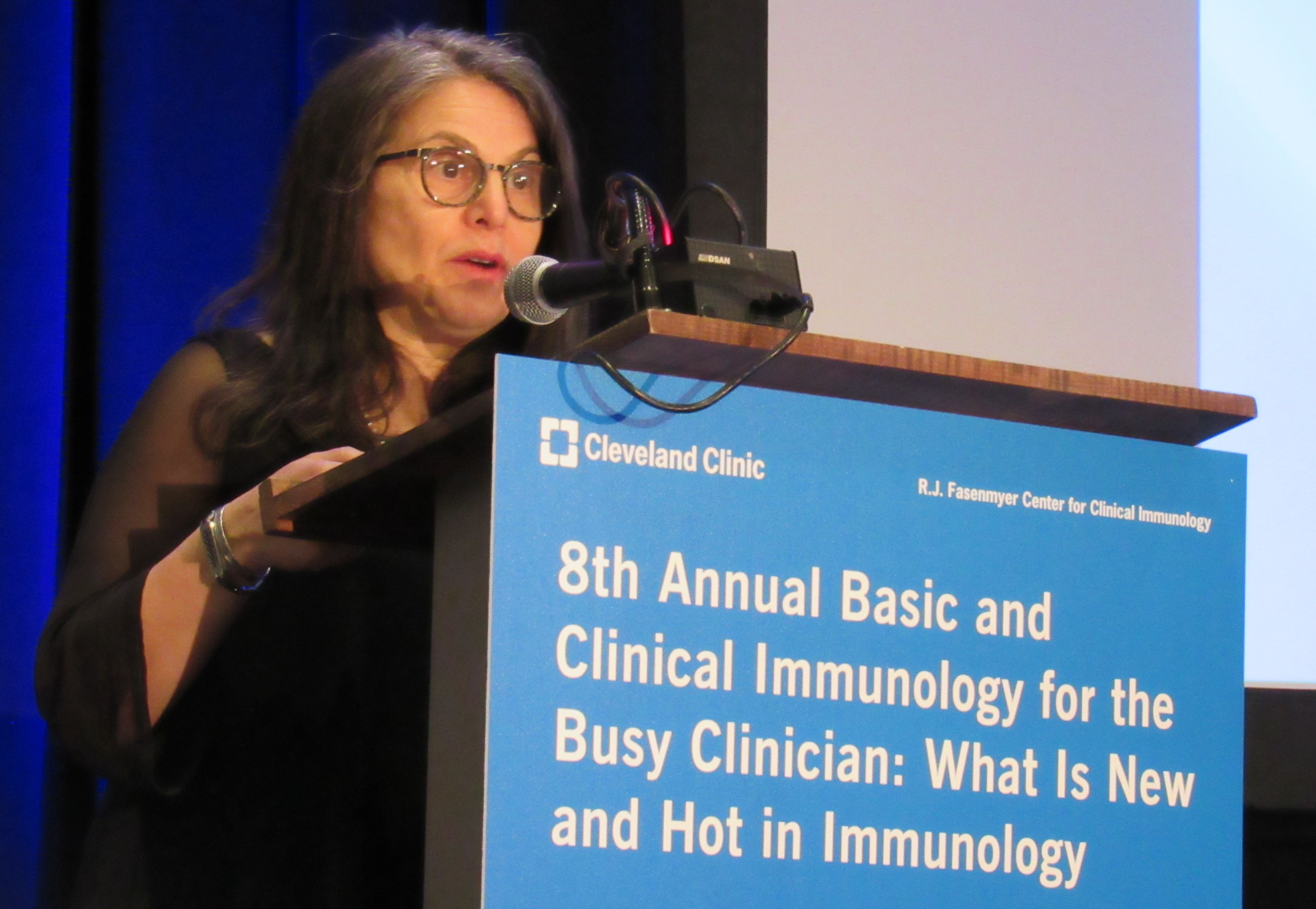Physicians should stress difference between 'real,' 'manufactured' foods

SCOTTSDALE, Ariz. — In addition to recommending physical activity and restful sleep, physicians and rheumatologists should also focus on their patients’ diets, with specific attention to the difference between “real foods and manufactured calories,” according to Roxanne Sukol, MD, of the Cleveland Clinic.
“This is about communicating, and that doesn’t necessarily mean we succeed, but it means that we try,” Sukol told attendees at the Basic and Clinical Immunology for the Busy Clinician annual symposium. “When a patient sees that you are trying, your intention counts for a lot.”
When discussing diet and food, physicians should draw a distinction between nutritious foods — whether they are high in calories or not — and manufactured calories, which are always high in calories but poor in nutritional quality, Sukol said. The latter category includes processed or “junk” foods, such as candy, muffins, corn syrup, coffee whiteners, soda and white flour, she added.
However, manufactured calories also include stripped carbs, as opposed to intact carbohydrates, which are found in fruits and vegetables, beans, legumes and whole grains, all of which also provide fiber. Stripped carbs, on the other hand, have all of their fiber and color removed in favor of a longer shelf life and a “cleaner” appearance, according to Sukol.

“One of these is food, and the other is fun,” Sukol said. “Fun is fine, but it doesn’t go in the ‘plus’ category. This is an important message for our patients — we don’t have to do this perfectly. We just have to do it better. If you are happy with all of your numbers and you feel well, then you are doing it enough.”
Sukol also emphasized the difference between nutritious and manufactured fats. In the former category, patients can enjoy avocados, olives, dark chocolate, deep-sea fish, all nuts and all seeds. The latter category, however, contains fats invented in during the 20th century, including soybean oil, corn oil, vegetable oil and cottonseed oil.
According to Sukol, a healthy diet need not include everything in the “real foods” or “nutritious fats” categories. Instead, patients should be encouraged to choose their own diet based on their own needs and preferences, using the above information as a guideline.
“In my mind there is a great big box, and in that box are hundreds of thousands of things to eat,” Sukol said. “However, they only come from 11 categories: Fruits and vegetables, beans, whole grains, nuts, seeds, eggs, dairy, meat, fish and poultry. Not everyone eats everything in the box. Some people are allergic to peanuts, or they are lactose intolerant, or certain foods make them sick, or they are vegan and they don’t eat half the things I just said, but I believe that the solution is in the box.”
She also cited “Blue Zone” regions, a term coined — and trademarked — by National Geographic Fellow Dan Buettner, to describe places on Earth where people live much longer than average. According to Sukol, although nearly all Blue Zone regions differ in specific diet and lifestyle, there remain some aspects that are common.
“When we look at Blue Zone populations like Sardinia and Loma Linda, California, or Okinawa, Japan, and all these different places all over the world, their diets are very different from the others,” she said. “However, what they have in common in the food department is that they are all eating out of this imaginary box. I believe that is one of the most foundational things we need to teach our patients — how to tell the difference between food and manufactured calories, and that they don’t have to feel bad about eating manufactured calories.”
“The manufactured calories don’t nourish you,” she added. “It’s OK to have them sometimes, but they don’t go in the ‘plus’ category. I want patients to be in the well-nourished category, who sometimes enjoys a little bit of entertainment. That’s the message. It’s a respectful message, it’s actionable, it’s doable and it also lets them off the hook of them trying to do something perfectly.” – by Jason Laday
Reference:
Sukol RJ. Talking to patients about anti-inflammatory diets. Presented at Basic and Clinical Immunology for the Busy Clinician; Feb. 28-29, 2020; Scottsdale, Arizona.
Disclosure: Sukol reports no relevant financial disclosures.

